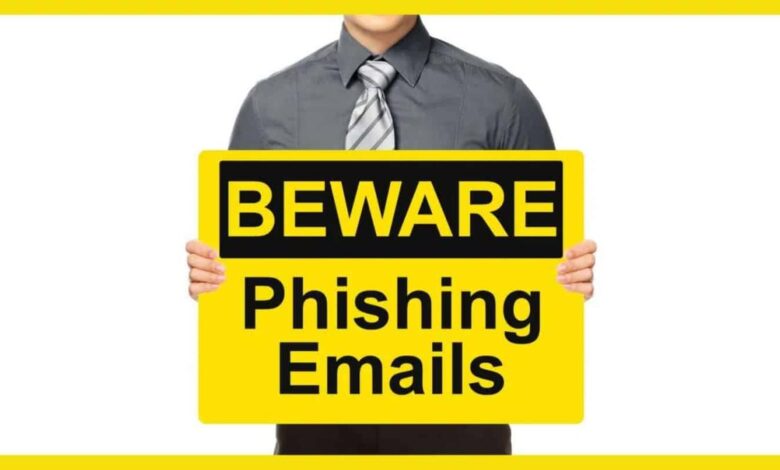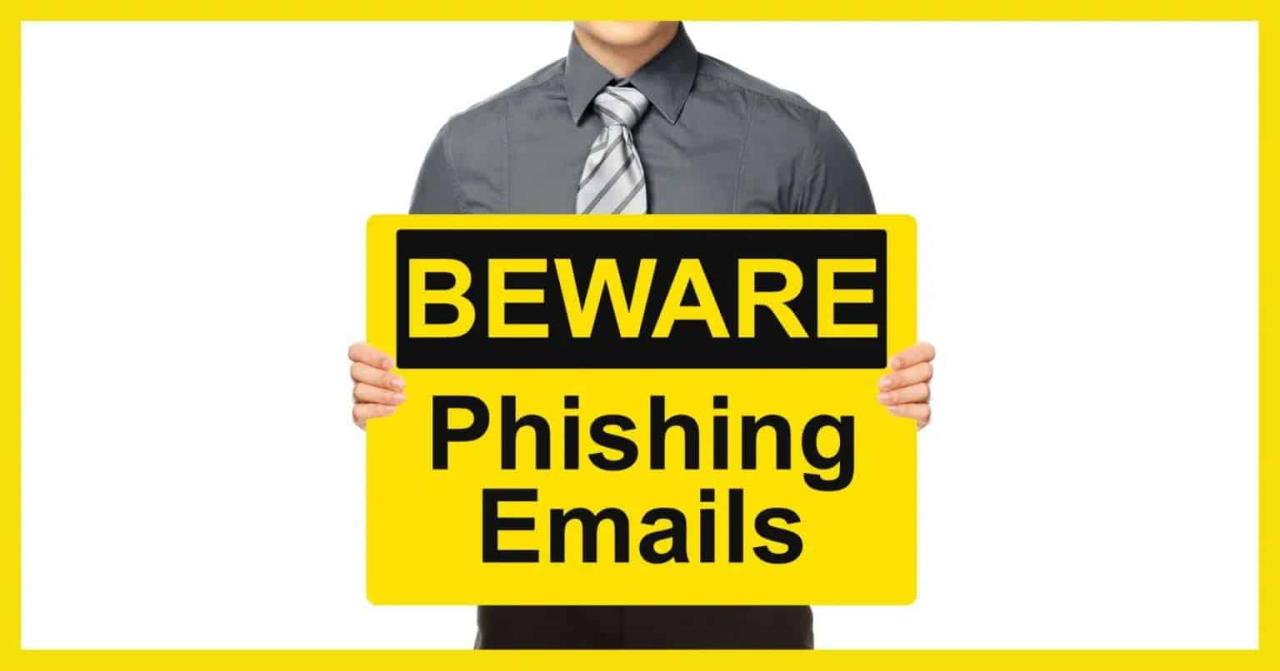
Beware of this Russia Oxford Vaccine Email Cyber Scam
Beware of this Russia Oxford Vaccine Email Cyber Scam! Remember those frantic days of the pandemic? The desperate hunt for vaccines? Well, scammers were busy then too, preying on our anxieties with cleverly crafted phishing emails promising the impossible: early access to a miracle Oxford-Russia vaccine. These emails weren’t just annoying; they were dangerous, designed to steal your personal information and money.
Let’s dive into how these scams work and how to protect yourself.
These sophisticated phishing attempts often mimic official communication, using convincing subject lines like “Urgent: Your Oxford-Russia Vaccine Appointment” or “Confirmation: Oxford-Russia Vaccine Delivery.” The email body usually includes a sense of urgency, perhaps mentioning limited availability or a special offer. They might even include seemingly legitimate logos and links to websites that look incredibly real, but are actually cleverly disguised traps.
The scammers leverage our fear and hope to trick us into clicking malicious links or downloading infected attachments, ultimately leading to identity theft or financial loss.
Understanding the Scam Email
These phishing emails, pretending to offer the Oxford-Russia vaccine, are a dangerous form of cybercrime. They prey on people’s anxieties about the pandemic and their desire for protection, using deceptive tactics to steal personal information and money. Understanding the common characteristics of these emails is crucial to protecting yourself.These emails employ various strategies to appear legitimate and trick recipients into revealing sensitive data.
They often mimic official communication styles, using logos, branding, and language associated with legitimate health organizations or government bodies. The scammers leverage urgency and fear to pressure victims into immediate action, preventing them from carefully considering the email’s authenticity.
Subject Line and Email Body Elements
The subject lines of these scam emails typically create a sense of urgency and importance. Common examples include: “Your Oxford-Russia Vaccine Appointment,” “Urgent: COVID-19 Vaccine Confirmation,” or “Free Oxford-Russia Vaccine Available.” The body of the email usually contains a compelling narrative, often including details about the vaccine’s supposed effectiveness and availability. It might mention a limited-time offer, a lottery, or a special program designed to distribute the vaccine to a select group of people.
The overall goal is to make the email seem like a genuine opportunity that the recipient shouldn’t miss.
Deceptive Language and Manipulative Tactics
The language used in these emails is often carefully crafted to manipulate emotions and bypass critical thinking. Scammers frequently employ phrases like “guaranteed protection,” “limited availability,” or “exclusive access.” They may also use pressure tactics, such as deadlines or threats of penalties for non-compliance. For instance, an email might claim that failure to respond within a certain timeframe will result in the loss of the vaccine opportunity.
Another common tactic is to create a false sense of authority by using official-sounding titles or including fabricated logos and seals.
Building Trust and Legitimacy
To enhance their credibility, these scam emails often incorporate elements designed to build trust. They may use official-looking email addresses or domain names that closely resemble those of legitimate organizations. They might include links to fake websites that mimic the appearance of official government or healthcare websites. Additionally, scammers may use forged signatures or include contact information that appears authentic.
They might even use social engineering techniques to personalize the email, addressing the recipient by name and including seemingly specific details about their location or personal information, gleaned from data breaches or other online sources. This personalization makes the email seem more genuine and increases the likelihood of the recipient falling victim to the scam.
Analyzing the Email’s Technical Aspects: Beware Of This Russia Oxford Vaccine Email Cyber Scam

This section delves into the technical red flags present in a phishing email disguised as an Oxford-Russia vaccine notification. By examining the email’s structure and code, we can identify clues that expose its malicious nature. Understanding these technical aspects is crucial for effective email security.
Phishing emails often employ subtle yet effective techniques to trick recipients. A careful examination of the sender information, email code, and links can reveal the deception. This analysis will highlight common methods used by cybercriminals and provide practical tips to identify such scams.
Sender Information Red Flags
Suspicious sender information is a primary indicator of a phishing attempt. Legitimate organizations use consistent and verifiable email addresses and domains. In contrast, phishing emails often employ spoofed addresses or domains that closely resemble legitimate ones, but with subtle differences. For example, a phishing email might use “[email protected]” instead of a legitimate Oxford University email address, which would likely use a “.ox.ac.uk” domain.
Another common tactic is using slightly misspelled domain names or using free email services like Gmail or Yahoo for official communications. Always verify the sender’s identity independently before clicking any links or opening attachments.
Email HTML Code Analysis
Analyzing the email’s HTML code reveals further clues. Phishing emails frequently contain poorly written or hastily constructed HTML. This often includes inconsistencies in formatting, broken or missing elements, and the use of generic HTML templates. Malicious links are often obfuscated within the HTML code, making it difficult to see their true destination at a glance. Furthermore, the code may contain embedded scripts or images that could trigger malware downloads or redirect to malicious websites.
Examining the HTML source code (usually accessible by right-clicking and selecting “View Page Source” or a similar option) is crucial for uncovering these hidden elements. The use of inline CSS styles instead of external stylesheets is also a common red flag.
Techniques Used to Mask Malicious Links or Attachments
Phishing emails often employ various techniques to disguise malicious links and attachments. One common method is URL shortening, using services like bit.ly or tinyurl.com to hide the actual destination. This makes it difficult to determine the link’s true nature. Another technique is using link cloaking, where the displayed text does not match the actual URL. For example, the email might show “Click here for your vaccine certificate,” but the link actually points to a malicious website.
Malicious attachments are frequently disguised as seemingly innocuous files, such as PDF documents or Microsoft Word files, but often contain malware that infects the recipient’s computer upon opening.
Indicators of Phishing Emails vs. Legitimate Emails
| Feature | Phishing Email | Legitimate Email |
|---|---|---|
| Sender Address | Suspicious domain, misspellings, free email services | Official domain, consistent with organization |
| Email Content | Urgent tone, grammatical errors, generic greetings | Professional tone, accurate grammar, personalized greetings |
| Links | Shortened URLs, link cloaking, suspicious domains | Clear and descriptive URLs, official website domains |
| Attachments | Unexpected attachments, unusual file types | Expected attachments, appropriate file types |
Exploring the Scam’s Target Audience

This Oxford-Russia vaccine email scam, like many phishing attempts, doesn’t target everyone indiscriminately. Instead, it focuses on specific demographic groups and exploits particular psychological vulnerabilities to maximize its success rate. Understanding this target audience is crucial to preventing future victims.The scammers likely prioritize individuals with a higher-than-average level of anxiety surrounding the pandemic and vaccination. This anxiety, often fueled by misinformation and conflicting news reports, creates a fertile ground for manipulation.
The promise of a scarce or exclusive vaccine, especially one associated with a prominent institution like Oxford University, can be incredibly appealing to those desperate for protection.
Demographic Profiles Targeted
The scammers likely target a broad range of individuals, but certain demographic profiles are probably more susceptible. Older adults, who may be less tech-savvy and more vulnerable to health anxieties, are a prime target. Similarly, individuals with limited access to reliable healthcare information or those living in areas with lower vaccination rates might be more easily tricked. People who actively seek out alternative health information online, possibly through less reputable sources, also present a higher risk.
Finally, those who display a general lack of trust in official institutions could be more inclined to believe a seemingly personalized email promising a quicker or easier path to vaccination.
Psychological Factors Increasing Vulnerability
Several psychological factors contribute to an individual’s vulnerability to this type of scam. The fear of missing out (FOMO) is a powerful motivator. The email often creates a sense of urgency, suggesting limited availability of the vaccine, pushing recipients to act quickly without critical thinking. Confirmation bias also plays a significant role; individuals might be more likely to believe information that confirms their pre-existing beliefs about vaccines or the pandemic, even if the information is false.
Trust in authority figures, even when misrepresented, can also lead to individuals falling prey to such scams. The email cleverly leverages this by associating itself with the respected Oxford University.
Exploitation of Pandemic-Related Anxieties
The pandemic created a climate of fear and uncertainty, which scammers readily exploited. The promise of a quick and easy solution to the health risks associated with COVID-19 is a powerful lure. The email preys on people’s desire for protection and their fear of infection or serious illness. By using seemingly official language and creating a sense of exclusivity, the scammers capitalize on the heightened anxieties surrounding the vaccine rollout and the desire for a sense of control in a chaotic situation.
The scarcity of vaccines during certain periods also increased the perceived value of the fraudulent offer.
Potential Consequences for Victims
The consequences for victims of this scam can range from minor inconveniences to significant financial and emotional losses. At a minimum, victims might experience frustration and wasted time. More seriously, they could suffer financial losses through the theft of personal information or the loss of money paid for a non-existent vaccine. The compromised personal data could also lead to identity theft and other serious crimes.
Beyond the financial impact, the emotional distress caused by being scammed can be significant, especially for vulnerable individuals. The sense of betrayal and violation of trust can have lasting effects on their mental well-being.
Disseminating Awareness and Prevention
Combating the Oxford/Russia vaccine email scam requires a multi-pronged approach focusing on proactive education and preventative measures. We need to empower individuals with the knowledge and tools to identify and avoid these malicious emails, protecting them from identity theft and financial loss. This involves a public awareness campaign, practical advice on safe online practices, and readily accessible information from trusted sources.A successful public awareness campaign needs to be visible, easily understood, and readily accessible to a wide audience.
It should utilize multiple channels to reach individuals across different demographics and technological literacy levels.
Public Awareness Campaign Strategies
The campaign should leverage diverse communication methods. Television and radio advertisements could feature short, impactful messages highlighting key warning signs of phishing emails, such as suspicious senders, urgent requests for personal information, and grammatical errors. Social media platforms like Facebook, Twitter, and Instagram offer targeted advertising opportunities to reach specific demographics. Collaborations with influencers and public figures can increase campaign reach and credibility.
Public service announcements (PSAs) on websites and in print media can reinforce the key messages. Finally, educational materials, including infographics and short videos, can be distributed through community centers, libraries, and healthcare facilities. The goal is to create a widespread understanding of the scam’s tactics and how to avoid them.
Preventative Measures and Safe Online Practices
Protecting oneself from phishing emails requires vigilance and the adoption of secure online practices. Individuals should be cautious of unsolicited emails, especially those claiming to offer free vaccines or other incentives. Never click on links or download attachments from unknown senders. Always verify the sender’s email address and website before providing any personal information. Strong passwords are crucial; they should be unique, at least 12 characters long, and include a combination of uppercase and lowercase letters, numbers, and symbols.
For example, a strong password might be “P@$$wOrd123!”. Regularly updating software and using antivirus software can help protect against malware. Enabling two-factor authentication wherever possible adds an extra layer of security. Finally, educating oneself about common phishing tactics can significantly reduce vulnerability.
Trustworthy Sources for Vaccine Information
Reliable information about vaccines is crucial in combating misinformation. Individuals should rely on official sources such as the World Health Organization (WHO), the Centers for Disease Control and Prevention (CDC), and their national health ministries. These organizations provide accurate, up-to-date information about vaccine safety, efficacy, and availability. Reputable news outlets and medical journals can also offer valuable insights, but always cross-reference information with official sources.
Avoid websites or social media accounts that promote conspiracy theories or offer unsubstantiated claims about vaccines. Trusting verified sources is key to avoiding scams and making informed decisions about vaccination.
Investigating the Scam’s Infrastructure
Unraveling the mechanics behind this Oxford vaccine email scam requires examining its infrastructure – the technological backbone and geographical reach that allows the scammers to operate. Understanding this infrastructure is crucial not only for individual protection but also for law enforcement efforts to disrupt these criminal networks.The scammers likely employ a multi-layered approach to collect personal information. This involves phishing emails, designed to look convincingly authentic, that lure recipients into clicking malicious links or downloading infected attachments.
These links often redirect to cleverly disguised websites mimicking legitimate platforms, prompting users to enter their credentials, banking details, or other sensitive data. The attachments, frequently disguised as official documents, may contain malware capable of keylogging, stealing data directly from the victim’s computer.
Methods of Personal Information Collection
Scammers utilize various techniques to harvest data. Phishing emails, as mentioned, are a primary method. They might also employ compromised websites or servers, creating fake login pages that mirror legitimate sites. Another tactic is the use of malware that silently infects computers, recording keystrokes and capturing screenshots to steal login credentials and other sensitive data. Finally, the scammers might purchase stolen data from other cybercriminal groups on the dark web, enriching their already substantial data collection.
Locations and Infrastructure of the Scammers
Pinpointing the precise location of these operations is challenging. Scammers often use anonymizing services like VPNs and Tor to mask their IP addresses and physical locations. Their infrastructure might involve servers located in countries with weak cybersecurity laws or lax enforcement, providing them with a degree of anonymity. They could be operating from anywhere globally, using cloud-based services and decentralized networks to make tracing their activities difficult.
This distributed nature makes it hard to identify a single command-and-control center. For example, a scammer could be based in one country, using servers in another, and sending emails through a third, creating a complex web of obfuscation.
Law Enforcement Investigation of Cybercrimes, Beware of this russia oxford vaccine email cyber scam
Law enforcement agencies typically investigate such cybercrimes using a multi-pronged approach. This involves tracing the email’s origin through header analysis and IP address tracking, identifying the servers used to send the emails and host the malicious websites. Collaboration with internet service providers (ISPs) and other technology companies is essential in obtaining relevant data and taking down malicious infrastructure.
International cooperation is often required as the scammers’ operations might span multiple jurisdictions. Digital forensics techniques are used to analyze infected computers and recover stolen data, potentially leading to the identification of victims and the perpetrators. Financial investigations track the flow of funds, identifying accounts used to launder the proceeds of the scam.
Reporting Suspicious Emails
Reporting suspicious emails is crucial in combating these scams. Users should report such emails to their respective ISPs, as well as to the relevant authorities, such as the Federal Trade Commission (FTC) in the United States, Action Fraud in the UK, or similar agencies in other countries. Many email providers also have built-in reporting mechanisms. Providing as much information as possible, including the email headers and any attachments, will aid in the investigation.
Prompt reporting helps law enforcement agencies identify patterns, track down the perpetrators, and ultimately shut down the scam operations. Furthermore, reporting allows authorities to build a comprehensive picture of the scam’s scale and impact, informing future preventative measures.
Illustrating the Impact

The Oxford-Russia vaccine email scam, while seemingly a minor inconvenience, carries significant consequences for its victims. The financial and emotional toll on individuals, coupled with the broader societal impact on public trust and healthcare systems, underscores the severity of such cybercrimes. Understanding these ramifications is crucial in combating their spread and protecting vulnerable populations.The financial losses incurred by victims can range from relatively small amounts (a few dollars in transaction fees) to substantial sums lost through bank account compromise or identity theft.
Beyond the direct monetary losses, victims often face the added burden of dealing with banks, credit agencies, and law enforcement to rectify the situation. This process is time-consuming, stressful, and can lead to further financial strain. The emotional impact is equally significant, leading to feelings of anger, frustration, violation, and even shame or embarrassment. Victims may experience anxiety, loss of trust in online systems, and a sense of helplessness.
Financial and Emotional Consequences for Victims
The financial impact extends beyond immediate monetary loss. Victims may face increased credit card fees, difficulty obtaining loans, and damaged credit scores. The emotional toll manifests as stress, anxiety, and a sense of betrayal. The time and effort required to recover from the scam, including reporting it to authorities and resolving any financial complications, add to the overall burden.
This can be particularly devastating for elderly individuals or those with limited financial resources.
Visual Representation of a Successful Scam
Imagine a flowchart: The initial email (box 1) acts as the starting point, enticing the recipient with a seemingly legitimate offer. This leads to the victim clicking a link (box 2), taking them to a fraudulent website designed to mimic the official Oxford vaccine site. The victim enters their personal and financial information (box 3), unknowingly sharing sensitive data with the scammers.
The scammers then access and exploit this information (box 4), resulting in financial losses (box 5) and identity theft (box 6). The final box (box 7) shows the victim experiencing the emotional and financial consequences, such as stress, anxiety, and financial hardship.
Seriously, folks, those Russia Oxford vaccine emails are a total scam – avoid them like the plague! I’m actually working on a project right now, learning about the cool advancements in domino app dev the low code and pro code future , which could help create better security systems to combat these kinds of cyber threats. It’s a stark contrast to the malicious intent behind those phishing emails, but it highlights the power of tech for good and bad.
So, stay safe out there and don’t fall for those fake vaccine offers!
Societal Impact on Public Trust and Healthcare Systems
Widespread vaccine scams erode public trust in both healthcare institutions and online systems. This distrust can lead to vaccine hesitancy, hindering public health efforts and increasing the risk of outbreaks. Furthermore, these scams strain resources within healthcare systems, as they divert time and attention from legitimate public health initiatives to addressing the fallout from fraudulent activities. The cost of investigating and responding to these scams adds to the financial burden on already stretched healthcare budgets.
Examples of Real-World Cases
Numerous instances of vaccine-related scams have emerged, often targeting vulnerable populations. For example, reports surfaced during the COVID-19 pandemic of individuals being defrauded by fake online vaccine registration sites or individuals selling counterfeit vaccines at exorbitant prices. News outlets documented cases of individuals losing significant sums of money to these schemes, highlighting the real-world impact of such fraudulent activities.
These cases serve as stark reminders of the ongoing need for public awareness and robust cybersecurity measures.
Epilogue
In the end, protecting yourself from these Russia Oxford vaccine email scams boils down to vigilance and skepticism. Don’t rush into clicking links or opening attachments from unknown senders. Verify information through official channels, and remember that if something seems too good to be true, it probably is. By staying informed and practicing safe online habits, we can collectively fight back against these malicious attempts and protect ourselves and our communities from becoming victims.
FAQ Summary
What should I do if I think I’ve received a scam email?
Don’t click any links or open any attachments. Forward the email to your internet service provider’s abuse department and then delete it. Report it to the appropriate authorities, such as the FTC or your local law enforcement.
How can I spot a fake vaccine email?
Look for poor grammar and spelling, suspicious links (hover over them to see the actual URL), requests for personal information, and unusual urgency.
Are there any legitimate sources for vaccine information?
Yes! Check your country’s health ministry website, the WHO website, and reputable news sources for verified information.
What kind of information do scammers typically try to obtain?
They often target personal details like your name, address, social security number, bank account information, and credit card numbers.





